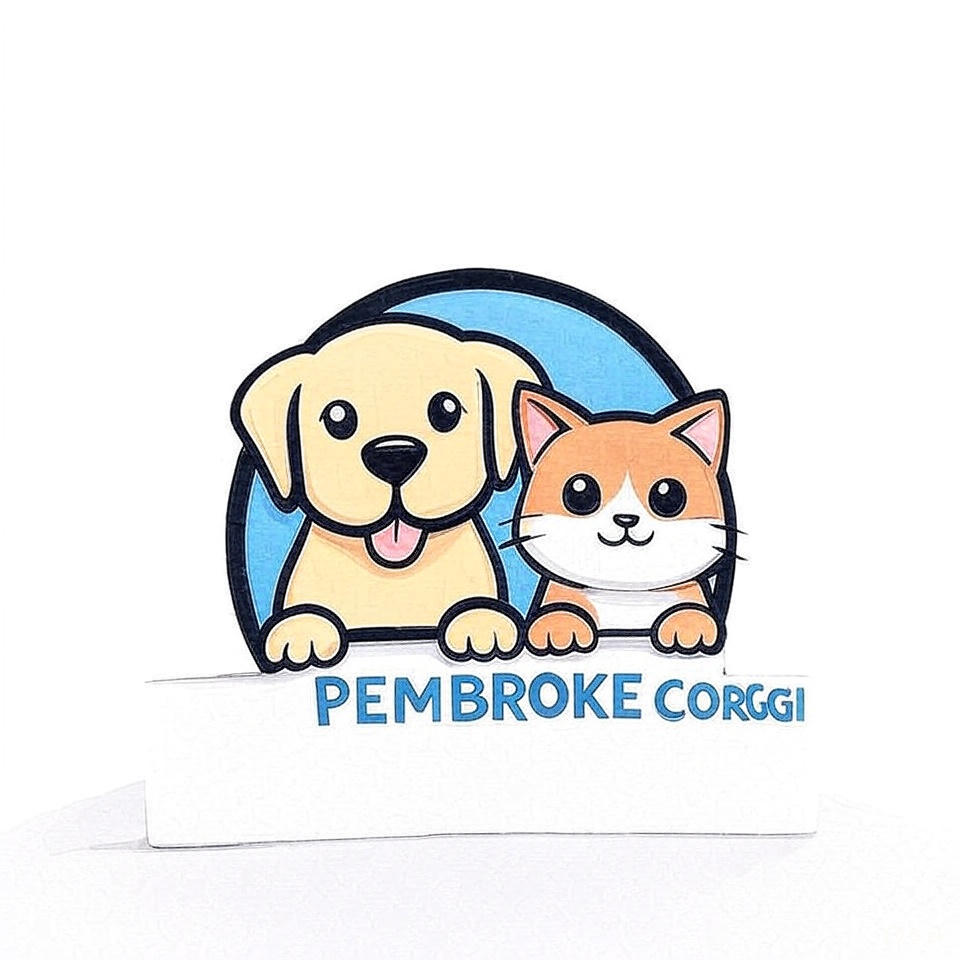Blog
Why Choose Pembroke Corgis — And Why Choose Us
The Pembroke Welsh Corgi: More Than Just a Cute Face
The Pembroke Welsh Corgi is beloved for a reason: they’re lively, affectionate, intelligent, and full of personality. While many sites offer listings and basic buying advice (for example, Pets4Homes currently lists ~18 Pembroke Corgi puppies for sale) Pets4Homes, we believe that choosing the right puppy is about much more than seeing a “cute photo + price.” It’s about understanding the breed’s needs, health issues, temperament, and breeding ethics.
On our site, PembrokeCorgi.co.uk, we aim to go deeper — to educate, to cultivate trust, and to help you make the best decision possible. Below we’ll compare what many listing sites do versus what you deserve as someone looking for a Corgi puppy.
What Many Puppy Listing Sites (Including Pets4Homes) Get Right — and What They Miss
What They Do Well
-
Volume & choice
Listing sites aggregate available puppies across many regions, giving you visibility into current offers. Pets4Homes, for example, gives you many adverts, filters (price, pedigree, etc.), and a starting point to browse. Pets4Homes -
Basic filters / vetting cues
They often allow filtering by “KC registered,” “licensed breeder,” or “ID verified,” which helps weed out low-quality or potentially fake adverts. Pets4Homes -
Accessibility
Because they are general-purpose aggregator sites, many people discover them first — and a lot of traffic goes there. That gives them reach, but doesn’t always equate to depth or quality.
What They Often Miss — or Fall Short On
-
Depth of content and expertise
The “puppies for sale” pages tend to be superficial — photos, price, maybe a short summary of the parents (health tested or not), and location. Rarely is there a strong educational narrative about breed-specific care, predisposed health conditions, or long-term owner responsibilities. -
Transparency and trust beyond checkboxes
“KC registered” is a good filter, but it doesn’t guarantee ethical breeding, socialised puppies, strong health protocols, or ongoing breeder support. Many adverts do not disclose full health screening results, lineage, or how puppies are reared (socialisation, early experience, etc.) -
Content that connects
Listing sites don’t tend to develop community, in-depth guides, or stories about individual dogs and families. They emphasize “here’s a puppy for sale,” but not “here’s how we help you raise a healthy, well-adjusted dog for life.” -
SEO & positioning around authority
General listing sites may not invest in brand authority for a particular breed. They spread across many species and breeds, which dilutes their focus. A niche site like yours can become the go-to authority on Pembroke Corgis in the UK — thus outranking listing pages more easily.
How PembrokeCorgi.co.uk Will (or Should) Outshine Them
Here’s a strategy (and sample content) to help your site become more visible, more trusted, and a go-to for Pembroke Corgi enthusiasts.
1. Become the definitive guide to Pembroke Corgis in the UK
Create long-form, high-quality content with topics such as:
-
Breed history, lineage, and distinguishing traits vs Cardigan Corgis
-
Detailed health & genetic concerns (IVDD / intervertebral disc disease, hip dysplasia, eye diseases, etc.)
-
How to evaluate a breeder (red flags, required documentation, ethical practices)
-
Puppy-rearing — socialisation, early neuro-stimulation, training, nutrition
-
Adult care: grooming, exercise, training challenges
-
Real owner stories, interviews with reputable breeders, photo diaries
These pages can attract organic traffic (SEO) and help you be seen as an authority. Listing pages like Pets4Homes’ “puppies for sale” pages typically have low content depth beyond listings. By contrast, your site’s content can be rich, updated, and breed-specific.
2. Emphasise transparency and trust
Show prospective buyers that they are dealing with a breeder (or network) who cares about the puppies, not just the sale. Some ideas:
-
Publicly share health test certificates, pedigrees, and parent profiles.
-
Profile individual litters prominently, with updates, growth progress, temperament notes, etc.
-
Offer “meet the breeder / video tour” features to let buyers see where and how puppies are raised.
-
Provide a “buyer’s support” section — tips, checklists, recommended vets, training referrals.
Transparency builds trust, and trust encourages inbound links, social shares, and repeat visits — all of which help SEO and outranking.
3. Leverage SEO best practices & content structure
-
Use keywords that resonate with buyers: “Pembroke Corgi puppies UK,” “Pembroke Corgi breeder in [region],” “Pembroke Corgi health tests,” etc.
-
Use structured data / schema markup (e.g. for ‘DogBreed’, ‘Article’, ‘LocalBusiness’) to help search engines.
-
Internally link between your puppy listings and your guides (e.g. a litter page links to “health tests” and “owner tips”).
-
Keep pages fresh and updated (new litters, health results, blog posts).
If your pages are more content-rich, updated, and more trustworthy, search engines are more likely to rank them ahead of aggregator listing pages.
4. Create a standout “Available Puppies / Litter” section
Rather than a generic directory, make your “available litters” section a core part of your site — integrate it with stories, photos, and educational content. Some features:
-
Each litter has a dedicated page: photo gallery, video, parent bios, health clearances, temperament notes, and application form.
-
“Reserve a puppy” or “Join waiting list” features.
-
Use story-driven content: “Meet the pups at 4 weeks,” “Growth diary,” “First outing photo gallery.”
-
Use high-quality visuals and SEO-optimized alt tags, captions.
These are things listing directories rarely do — they simply show a grid of adverts with minimal narrative.
5. Use testimonials, social proof, community
-
Feature owner testimonials, photos, and updates (before–after, growth, adventures)
-
Consider a blog or community forum (or integration with social media) for new & prospective owners to ask questions
-
Invite guest posts (vets, trainers) or interviews (breeders, long-time owners)
-
Encourage shareable content: e.g. “10 Things You Didn’t Know About Pembroke Corgis” infographic
Such social proof encourages backlinks, shares, and repeated visits — all beneficial for SEO and authority.
Sample Article Draft (for your site) — “How to Choose a Pembroke Corgi Puppy (UK Buyers’ Guide)”
Thinking of bringing home a Pembroke Welsh Corgi puppy? Here’s your comprehensive guide to choosing wisely in the UK.
1. Understand the Breed
-
History & characteristics — Pembroke vs Cardigan; typical sizes, coat colours, life expectancy (12–15 years).
-
Personality & temperament — intelligent, alert, affectionate, sometimes stubborn; they thrive in homes where they get mental and physical stimulation.
2. Key Health Considerations
Pembroke Corgis are generally healthy, but there are genetic and structural issues to watch out for:
-
Intervertebral Disc Disease (IVDD): due to their elongated spine, Corgis are more susceptible.
-
Hip & elbow dysplasia
-
Progressive Retinal Atrophy, cataracts, PRA / eye conditions
-
Degenerative Myelopathy, degenerative conditions
-
Other issues (e.g. obesity, back strain)
Check for health clearances such as eye certificates (e.g. BVA / KC scheme), hip/elbow scores, and any genetic tests relevant to the breed.
3. Choosing a Reputable Breeder in the UK
Ask these questions:
-
Are both parents health tested? Can I see the certificates?
-
Is the breeder licensed (if required in their area) and/or affiliated with KC / breed clubs?
-
How and where are the puppies raised (in home, socialised, early exposure to sounds, etc.)?
-
Can I visit, or at least see video of the whelping area / home environment?
-
Do they offer ongoing support, microchipping, vaccinations, worming, contract, health guarantee?
-
How many litters per year do they have, and how many dogs are in their breeding programme?
4. What to Look for in a Puppy
When you visit (or see video):
-
The pup should be alert, curious, well socialised, not frightened.
-
Eyes, ears, coat should look healthy, clean.
-
Movement should be smooth (listen for signs of pain or stiffness).
-
Interact with mum & siblings (temperament cues).
-
Ask to see where the pups are housed, and how often they interact with people, household sounds, etc.
5. Bringing Your Puppy Home: First Weeks
-
Nutrition: High-quality puppy diet, gradual transition.
-
Vaccinations / vet checks: Ensure first vet visit, schedule further vaccines, deworming.
-
Socialisation & exposure: Gentle introduction to sounds, surfaces, people, other pets.
-
Training fundamentals: Crate training, basic commands, housebreaking.
-
Exercise: Short, gentle walks (avoid jumping or stairs early on).
-
Grooming & maintenance: Regular brushing (Corgis shed), nail trimming, ear cleaning.
6. Costs to Consider (Beyond the Purchase Price)
-
Vet care, insurance, microchipping, routine checkups
-
High-quality food & supplements
-
Training / behaviour classes
-
Grooming tools, beds, toys, crates
-
Emergency or unexpected health care
7. When to Buy / Reserve
-
Many litters are announced months ahead — consider reserving early.
-
Always get deposit terms, contracts, and be sure you’re comfortable with the breeder’s policies.
-
Be cautious of “too good to be true” adverts — extremely low prices or refusal to share health info are red flags.
Call to Action & Site Features
At the end of your article, include:
-
A link to your “Available Litters / Puppies” page
-
A contact / inquiry form
-
A downloadable buyer’s checklist PDF (health tests, questions, red flags)
-
Invitation to join a mailing list (“Get notified when a new Pembroke Corgi litter is available”)
-
Links to blog posts, owner stories, health-test records

